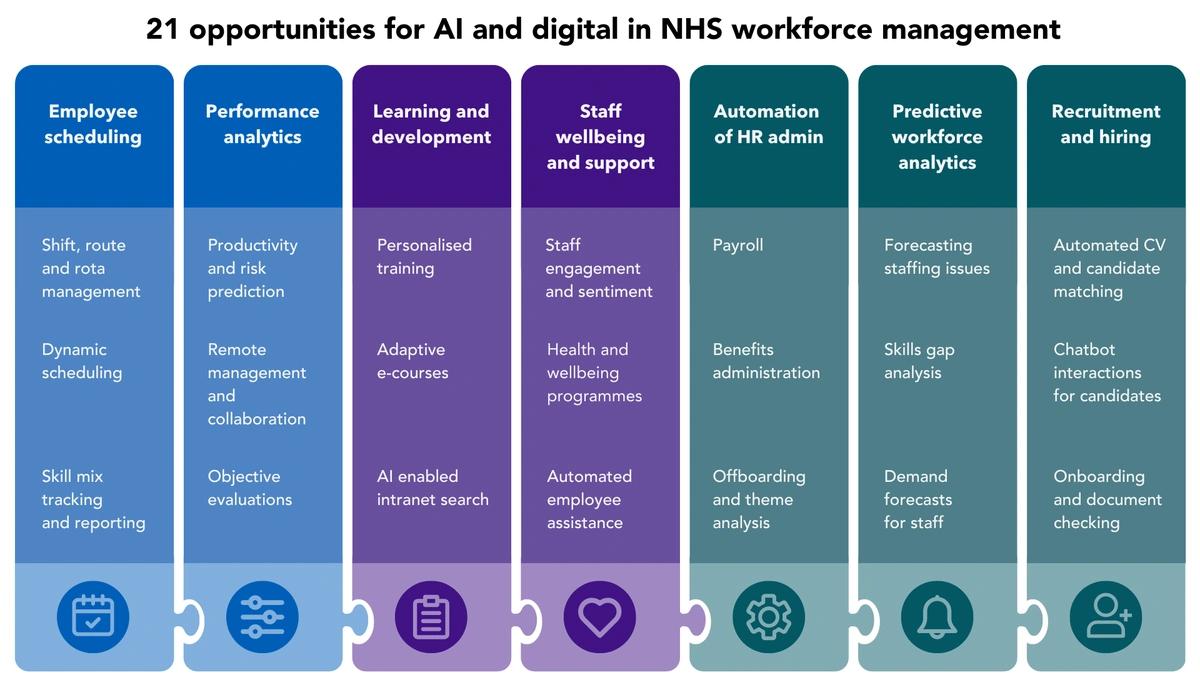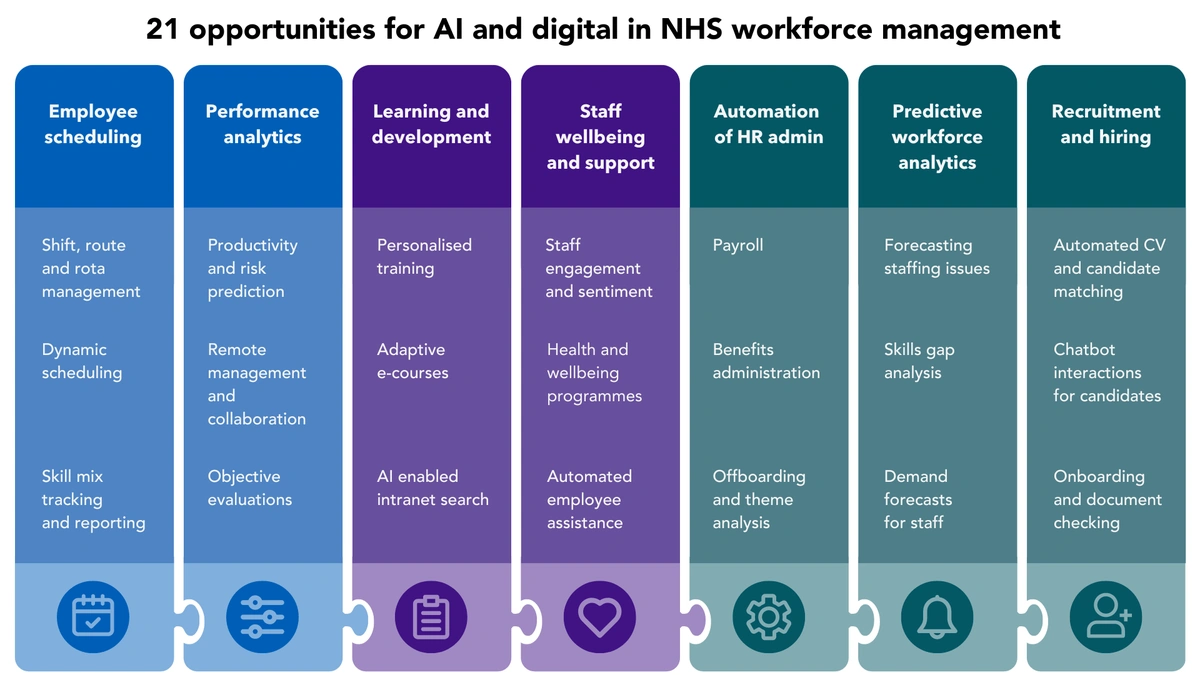Infosys to Provide New NHS Workforce Management Solution for England and Wales
Here’s the thing – when you hear about a big company like Infosys partnering with a national institution like the NHS , especially involving a workforce management solution , it’s easy to gloss over the details. It sounds like another tech implementation, right? But what fascinates me is the potential ripple effect this could have, not just on the NHS but on healthcare efficiency across England and Wales. Let’s dive deeper and see what’s really going on.
Why This NHS Workforce Management Solution Matters

Let’s be honest, the NHS has been under immense pressure. Staffing shortages, burnout, and administrative overheads are persistent challenges. A new NHS workforce management system isn’t just about automating timesheets. It’s about optimizing resources, ensuring the right people are in the right place at the right time, and ultimately, improving patient care. Think of it as a highly complex logistical puzzle – one where the pieces are skilled professionals dedicated to saving lives. And if Infosys can bring its technological prowess to solve this, the impact could be significant.
The “why” here is crucial. This isn’t just about cutting costs (although that’s likely a factor). It’s about making the NHS a more attractive place to work, reducing the strain on existing staff, and allowing healthcare professionals to focus on what they do best: caring for patients. The implementation will include effective rostering software which allows more appropriate staff scheduling based on patient need. In the long run, this is a significant step. The system will also allow for better insight on healthcare staffing levels .
How Will Infosys Deliver? Understanding the Implementation
So, how exactly will Infosys achieve this grand vision? Details are still emerging, but it’s likely that the solution will involve a suite of tools designed to streamline various aspects of workforce management. This could include:
- Advanced scheduling and rostering capabilities
- Real-time tracking of staff availability and location
- Automated time and attendance management
- Integration with existing NHS systems
- Data analytics to identify areas for improvement
I initially thought this was straightforward, but then I realized the scale of the challenge. The NHS is a vast organization with diverse needs across different regions and departments. The implementation will need to be carefully planned and executed to avoid disruption and ensure that the new system is user-friendly for all staff. This requires a phased approach , with pilot programs and thorough training to ensure a smooth transition. But, that’s just the beginning, and it requires the right strategy to implement it effectively.
The Emotional Angle | What This Means for NHS Staff
Let’s not forget the human element. For many NHS staff, the current system is often clunky, time-consuming, and frustrating. Imagine a nurse spending hours wrestling with paperwork instead of focusing on patient care. Or a doctor struggling to find available staff to cover a critical shift. These are real problems that impact morale and contribute to burnout. A well-designed NHS workforce management solution could alleviate some of these pressures, making their jobs easier and more rewarding. It allows for better staff scheduling optimization and fair work allocation. It may also make work hours more flexible and adjustable as needed by NHS professionals.
What fascinates me is the potential for this technology to empower NHS staff. By giving them more control over their schedules and reducing administrative burdens, it could help them feel more valued and appreciated. And that, in turn, could lead to better patient care and a more positive work environment.
Addressing Potential Challenges and Concerns
Of course, no major technology implementation is without its challenges. Data security, privacy concerns, and resistance to change are all potential hurdles that will need to be addressed. The NHS will need to ensure that the new system is compliant with all relevant regulations and that staff are properly trained to use it. There will need to be a special emphasis on data protection . A robust strategy is needed.
And let’s be honest – there will likely be some teething problems along the way. But if the NHS and Infosys can work together to overcome these challenges, the potential benefits are enormous. It is important to note that there will need to be training and support available to all staff to ensure that the system is implemented smoothly.
According to the NHS website ( www.england.nhs.uk ), they are dedicated to creating a sustainable and effective work environment for their staff. In the end, this system will enable the NHS to operate more efficiently and effectively.
Looking Ahead | The Future of Healthcare Workforce Management
This partnership between Infosys and the NHS could be a sign of things to come. As healthcare systems around the world face similar challenges, the need for innovative workforce management solutions will only continue to grow. What’s needed is more accurate staffing demand forecasting . By leveraging technology to optimize resources, improve efficiency, and empower staff, healthcare organizations can deliver better care and create a more sustainable future. And if this collaboration proves successful, it could serve as a model for others to follow. But it’s more than just a model; it’s a necessity for the future of healthcare.
FAQ
What specific areas of the NHS will this solution impact?
Initially, the focus is likely on areas with significant staffing challenges, such as hospitals and community health services. Over time, it could be rolled out to other departments and regions.
How will this system address data security and privacy concerns?
The NHS will need to ensure that the solution is compliant with all relevant regulations, including GDPR, and that appropriate security measures are in place to protect patient data.
Will this lead to job losses within the NHS?
The goal is not to eliminate jobs, but rather to optimize resources and improve efficiency. The focus will be on redeploying staff to areas where they are needed most.
How will the NHS ensure that staff are properly trained to use the new system?
The implementation will likely involve a comprehensive training program to ensure that all staff are comfortable using the new tools and processes.
What are the long-term goals for this workforce management solution?
The ultimate goal is to create a more sustainable and efficient healthcare system that delivers better care to patients while also supporting the well-being of NHS staff.
What kind of analytics will the system be able to provide?
The system will provide reports on staff allocation, labor costs, and other important metrics. These reports will give insights and ultimately save the NHS money.
Ultimately, the success of this NHS workforce management solution will depend on collaboration, communication, and a shared commitment to improving healthcare for everyone. It’s not just about technology; it’s about people – the dedicated professionals who work tirelessly to keep us healthy and the patients who rely on their care. And that’s something worth getting excited about.













